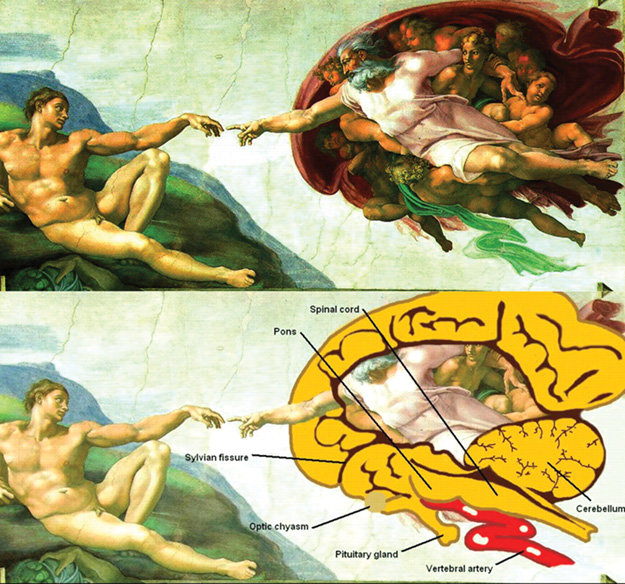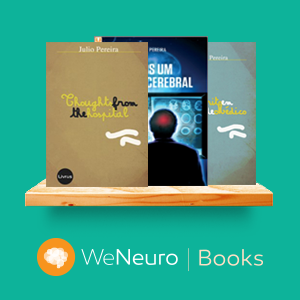1 – Neuroanatomy Atlas in Clinical Context: Structures, Sections, Systems, and Syndromes 10th Edition by Duane E. Haines PhD (Author)
Neuroanatomy Atlas in Clinical Context is unique in integrating clinical information, correlations, and terminology with neuroanatomical concepts. It provides everything students need to not only master the anatomy of the central nervous system, but also understand its clinical relevance – ensuring preparedness for exams and clinical rotations. This authoritative approach, combined with salutary features such as full-color stained sections, extensive cranial nerve cross-referencing, and systems neurobiology coverage, sustains the legacy of this legendary teaching and learning tool.
2- Snell’s Clinical Neuroanatomy 8th Edition by Ryan Splittgerber Ph.D. (Author)
Snell’s Clinical Neuroanatomy , Eighth Edition, equips medical and health professions students with a complete, clinically oriented understanding of neuroanatomy. Organized classically by system, this revised edition reflects the latest clinical approaches to neuroanatomy structures and reinforces concepts with enhanced, illustrations, diagnostic images, and surface anatomy photographs.
3- Clinical Neuroanatomy made ridiculously simple 5th Edition by Stephen Goldberg M.D (Author)
Excellent USMLE Board Review. This now-classic text (approaching 500,000 copies sold) presents the most relevant points while traversing the daunting waters of clinical neuroanatomy with mnemonics, humor, illustrations and case presentations. Topics include General Anatomical Organization, Blood Supply, Meninges and Spinal Fluid, Spinal Cord, Brain Stem, The Visual System, Autonomic System and Hypothalamus, Cerebellum, Basal Ganglia and Thalamus, Cerebral Cortex, Neurotransmitters, Mini-atlas and Clinical Review in only 99 pages! Brief, clear and conceptually intuitive. Free digital Download of Neurologic Localization program (Win/Mac) from MedMaster’s website, which includes: • 3D animated rotations of the brain. • Neuroanatomy laboratory tutorial with photographs of brain specimens. • Clicking on any area of the nervous system reveals the name of the structure and the effects of an injury to that area, with explanations. • Selecting a symptom graphically shows all areas of the nervous system that, when injured, could result in the symptom. • Tutorial on how to localize neurologic injuries. • Interactive quiz of classic neurologic cases.
Reinforce your knowledge of neuroanatomy, neuroscience, and common pathologies of the nervous system with this active and engaging learn and review tool! Netter’s Neuroscience Coloring Book by Drs. David L. Felten and Mary Summo Maida, challenges you to a better understanding of the brain, spinal cord, and peripheral nervous system using visual and tactile learning. It’s a fun and interactive way to trace pathways and tracts, as well as reinforce spatial, functional, and clinical concepts in this fascinating field.
5- Clinical Neuroanatomy, Twentyninth Edition 29th Edition by Stephen Waxman (Author)
A comprehensive, color-illustrated guide to neuroanatomy and its functional and clinical applications
Engagingly written and extensively illustrated, Clinical Neuroanatomy, Twenty-Ninth Edition gets you up to speed on neuroanatomy, its functional underpinnings, and its relationship to the clinic. You’ll learn everything you need to know about the structure and function of the brain, spinal cord, and peripheral nerves. This authoritative guide illustrates clinical presentations of disease processes involving specific structures, explores the relationship between neuroanatomy and neurology, and reviews advances in molecular and cellular biology and neuropharmacology as related to neuroanatomy.
6- Neuroanatomy Text and Atlas, Fifth Edition 5th Edition by John Martin (Author)
Neuroanatomy: Text and Atlas covers neuroanatomy from both a functional and regional perspective to provide an understanding of how the components of the central nervous system work together to sense the world around us, regulate body systems, and produce behavior. This trusted text thoroughly covers the sensory, motor, and integrative skills of the brains and presents an overview of the function in relation to structure and the locations of the major pathways and neuronal integrative regions.
Neuroanatomy: Text and Atlas also teaches readers how to interpret the new wealth of human brain images by developing an understanding of the anatomical localization of brain function. The authoritative core content of myelin-stained histological sections is enhanced by informative line illustrations, angiography, and brain views produced by MRI, and other imaging technologies.




